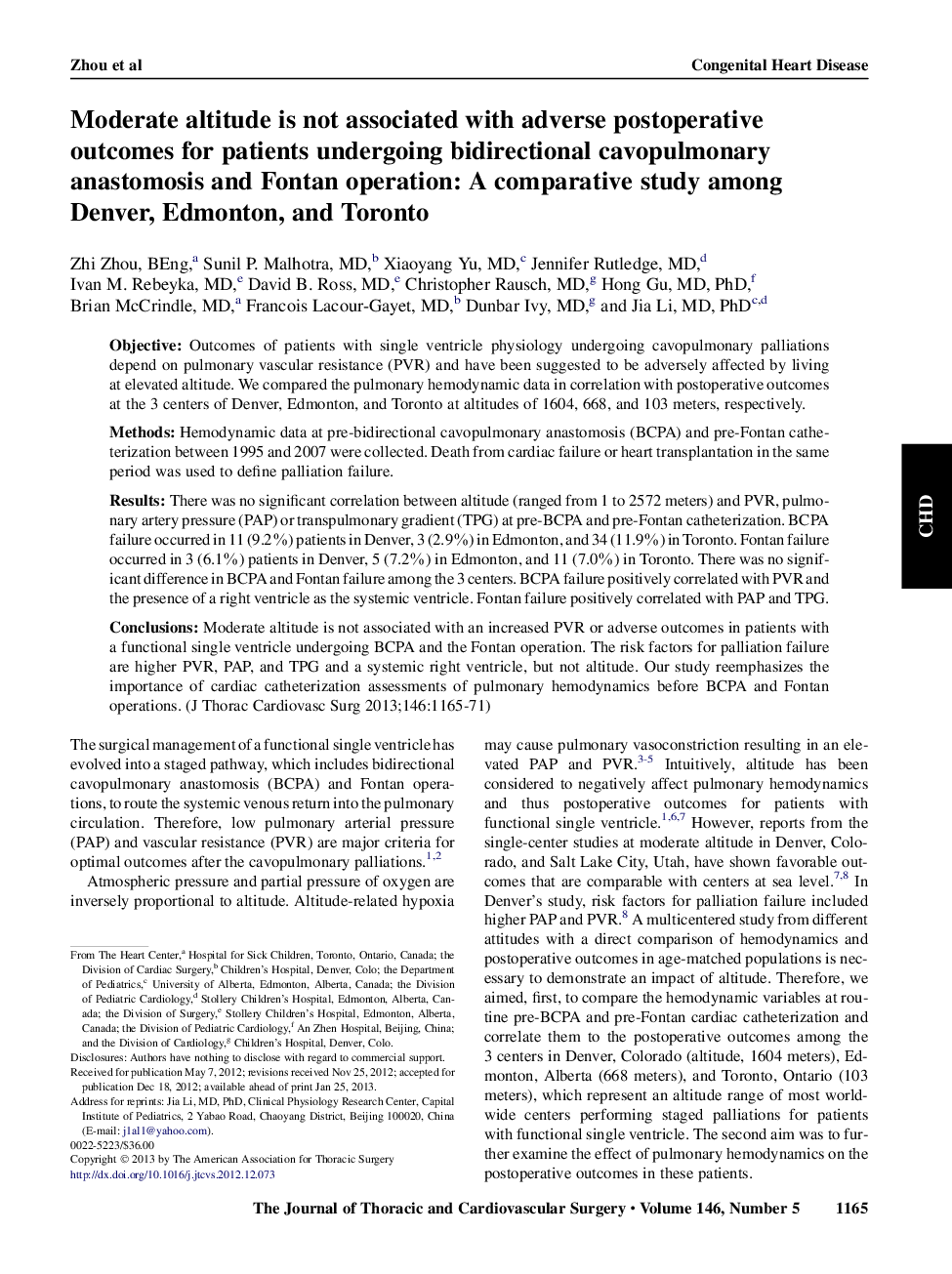| Article ID | Journal | Published Year | Pages | File Type |
|---|---|---|---|---|
| 2979842 | The Journal of Thoracic and Cardiovascular Surgery | 2013 | 7 Pages |
ObjectiveOutcomes of patients with single ventricle physiology undergoing cavopulmonary palliations depend on pulmonary vascular resistance (PVR) and have been suggested to be adversely affected by living at elevated altitude. We compared the pulmonary hemodynamic data in correlation with postoperative outcomes at the 3 centers of Denver, Edmonton, and Toronto at altitudes of 1604, 668, and 103 meters, respectively.MethodsHemodynamic data at pre-bidirectional cavopulmonary anastomosis (BCPA) and pre-Fontan catheterization between 1995 and 2007 were collected. Death from cardiac failure or heart transplantation in the same period was used to define palliation failure.ResultsThere was no significant correlation between altitude (ranged from 1 to 2572 meters) and PVR, pulmonary artery pressure (PAP) or transpulmonary gradient (TPG) at pre-BCPA and pre-Fontan catheterization. BCPA failure occurred in 11 (9.2%) patients in Denver, 3 (2.9%) in Edmonton, and 34 (11.9%) in Toronto. Fontan failure occurred in 3 (6.1%) patients in Denver, 5 (7.2%) in Edmonton, and 11 (7.0%) in Toronto. There was no significant difference in BCPA and Fontan failure among the 3 centers. BCPA failure positively correlated with PVR and the presence of a right ventricle as the systemic ventricle. Fontan failure positively correlated with PAP and TPG.ConclusionsModerate altitude is not associated with an increased PVR or adverse outcomes in patients with a functional single ventricle undergoing BCPA and the Fontan operation. The risk factors for palliation failure are higher PVR, PAP, and TPG and a systemic right ventricle, but not altitude. Our study reemphasizes the importance of cardiac catheterization assessments of pulmonary hemodynamics before BCPA and Fontan operations.
